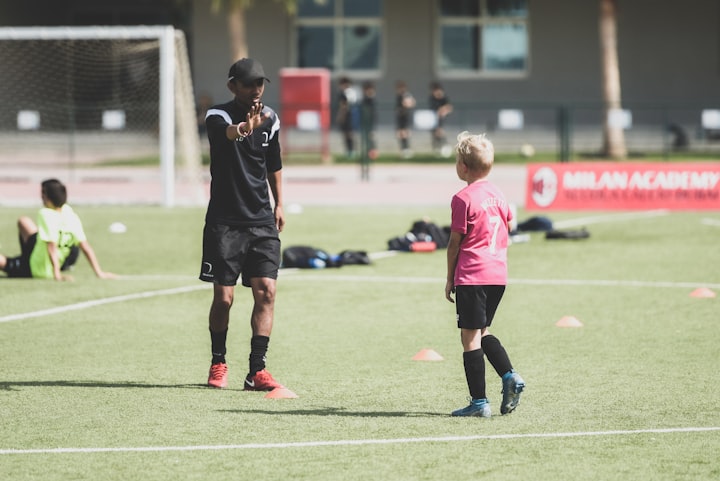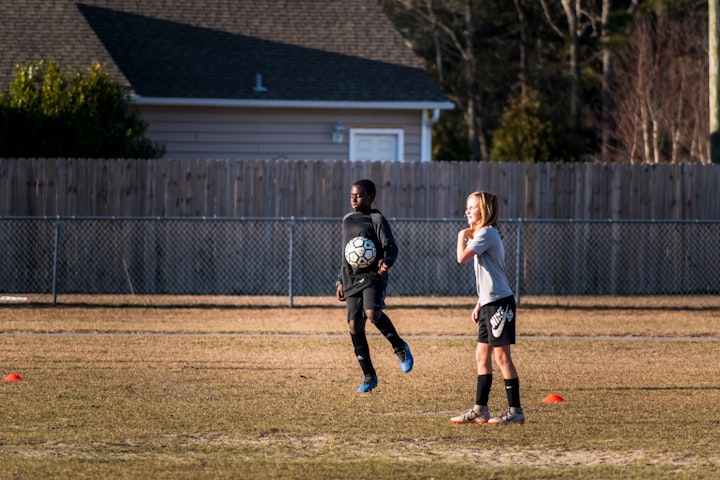Why Free Play Still Has a Place In Youth Sports
The days of playing ball in the streets and neighborhood parks may be a thing of the past, but there is still room for free play in organized youth sports.

When I was growing up, parents thought nothing of allowing their children to play pickup games in the street or a neighborhood park. Kids would choose teams, play by their own rules, and resolve conflicts (yes, sometimes fights would break out). This was usually accomplished without adult intervention.
Commonly known as “free play”, this concept isn’t as popular today. For one thing, parents are often reluctant to let their children roam free for fear a predator is lurking just around the corner. Kids would rather stay inside and play video games than be outside, and a movement toward a more rigorous structure in youth sports has made free play less attractive.
There’s no question children of all ages need structure. But many educators and even coaches agree the opportunity to play independently is beneficial to their development as an athlete and a person.
I once asked Dan Keller, a youth baseball coach in California, whether he believed in the concept. His answer was an enthusiastic “yes!” Keller, who runs the free online baseball resource
believes young athletes should have the freedom to play and compete without thought or fear.
Granted, it isn’t always easy for coaches to take time during an already tight practice schedule for fun. But at a time when kids are under so much pressure to win and perform at the highest individual level, they need free play now more than ever.
Here are seven benefits to keep in mind.
1. Free play can be used to teach a skill
Sometimes, even a regular routine or drill can be turned into a fun learning experience.
One such activity is what Keller calls the Water Balloon Drill. It’s intended to not only teach younger kids the art of hitting a baseball, but help them overcome the fear of swinging a bat. It can be run as a side station or at the beginning of a practice.
All you need are water balloons (75 is a good number to make sure you have enough for everyone), and a batting tee. Best of all, it keeps everyone loose and breaks up the monotony of practice.
“We had happy kids, happy parents, lots of smiles,” Keller told me back in 2018. “I get LOTS of positive feedback from coaches across the nation about the simplicity of making kids smile by hitting water balloons.”
2. Kids learn to think for themselves
In 2006, the
released a document called Best Practices for Coaching, in which it recommends coaches allow their players to do more unstructured play during practice with less adult supervision. The goal, according to the USSF, is to develop better players who are also more creative and able to think on their own.
3. Free play can relieve stress and anxiety
Dr. Kenneth R. Ginsburg, a pediatrician in Philadelphia, believes this is crucial for a child’s mental development, particularly when it comes to handling anxiety and other emotions that bring on stress.
“Kids deal with their anxiety and fears through free play,” Dr. Ginsburg told
“It’s their natural means of building resiliency.”
4. Too much structure can ruin the experience
Keller learned this when he first began conducting summer baseball camps in Southern California. He placed more emphasis on tightly controlled practices and less on playing games. However, it quickly became obvious to Keller the players weren’t as engaged. While they learned a lot, he conceded the controlled environment killed the joy of the experience. So he changed his approach, with more games that could be stopped temporarily if instruction were needed.
5. More free play makes sports feel less like work
John O’Sullivan, head of
is quite direct when the subject of free play is brought up: Athletes don’t work sports, they play them. O’Sullivan, whose mission is to give youth sports back to the kids, says once the thrill is gone, so is the peak performance. Games and practices become a grind, and burnout soon sets in. If the goal is to develop successful athletes, there needs to be a level of enjoyment; otherwise, they will look for something else to fulfill their needs.
6. Free play can help in minimizing injuries
According to doctors at
Nationwide Hospital’s sports medicine department,
too much intense physical activity can result in stress fractures, tendonitis, and other injuries to joints and muscles. The study found the number of injuries dropped significantly when kids were allowed to engage in their own play. It concluded that too much intense physical activity has contributed to the rise of serious injuries in today’s youth sports culture.
7. Play time may make kids smarter
Free play among young children has been linked to an increase in academic performance and creativity as they get older, according to a 2014
by the University of Texas. Ideally, there should be a balanced mix of organized activities and freedom for kids to create their own structure, the study says.
As music icon Bob Dylan once sang, “the times, they are a-changin’. The days of playing ball in the streets and neighborhood parks may be a thing of the past, but there is still room for free play in organized youth sports. It may not be easy for adults to allow young athletes to think for themselves, solve problems and develop physical and emotional well-being through less structure. But striking a balance may create a healthier and more positive environment for everyone. Sometimes, it’s best to just let the kids play.
About the Creator
Stephen Michael Kerr
Stephen has covered sports as a journalist for over 30 years. His passion for creating a better sports environment for kids led him to devote his full attention to tackling issues facing youth sports. Follow him on Twitter: @smkwriter1






Comments
There are no comments for this story
Be the first to respond and start the conversation.